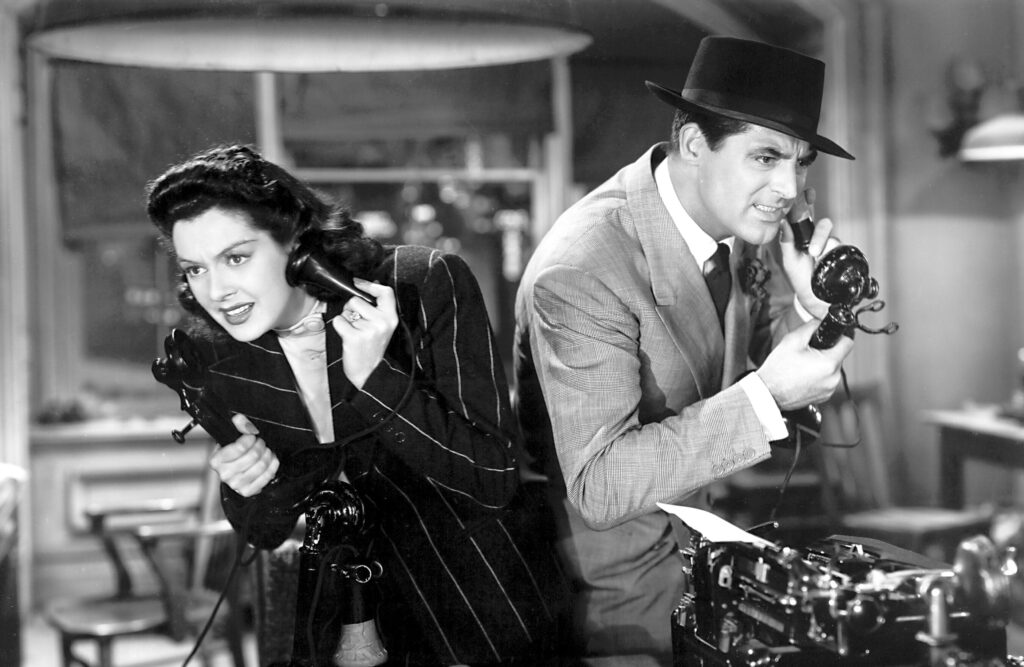“… the principles which Hollywood claims as its own rely on notions of decorum, proportion, formal harmony, respect for tradition, mimesis, self-effacing craftsmanship, and cool control of the perceiver’s responses – canons which any critic in any medium call ‘classical’” –– David Bordwell, Janet Staiger and Kristin Thompson, The Classical Hollywood Cinema: Film Style and Mode of Production to 1960.”
David Bordwell et.al., in the above-mentioned seminal book on Hollywood Cinema, analyzed over a hundred films made in Hollywood, under the studio system, from the 1920s to the late 1950s and arrived at a set of singular stylistic features which posit the films as ‘classical’.
First and foremost, the cinema is psychological focusing on the desires/goals and obstacles faced in fulfilling these desires/goals by the protagonist. The protagonist has a limited time to achieve his goal/s and to further increase the dramatic quotient of the narrative two lines of action – the external/public and the internal/private (most often a heterosexual relationship and its ups and downs). The ending brings closure – all questions and mysteries raised by the plot are resolved resulting in a definitive outcome that is in complete agreement with the personality traits of the protagonists and other characters. The presence of an omniscient narrator, who controls what the audience sees and in what order. This is reinforced by the narrator’s omnipresence in the sense that the camera is not restricted to the point of view of the characters involved but is also free to move around the cinematic space to reveal information to the audience that is not shared by the characters in the film is another key aspect of classic Hollywood films. Although the films are composed of multiple shots varying in image size and perspective, an illusion of smooth and jerk-free reality is created by the principles of invisible/continuity editing that were pioneered and codified principally by DW Griffith in films like The Birth of a Nation (1915). Apart from these, high production values and the prevalence of images shot with glossy three-point lighting schemes (except in film noirs and horror movies) are another set of redeeming features of classical Hollywood cinema. It is pertinent to note that these stylistic features were also an outcome of the mode of production of the films – the studio system followed what economists would term as the principles of division of labour and were often made under the strict supervision and control of the studio bosses.
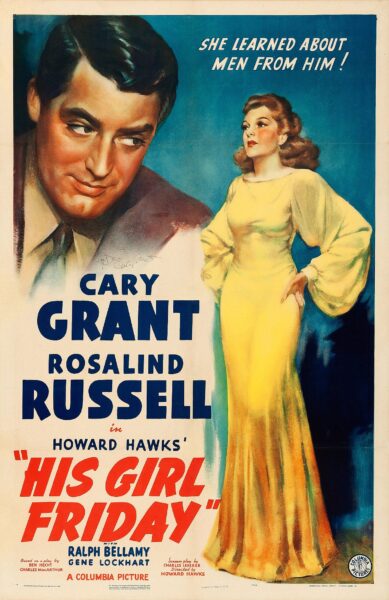
His Girl Friday (1940) is one of director Howard Hawks’ important films. It is also one of the finest screwball comedies – a genre that developed in Hollywood in its classic era, also a genre of which Howard Hawks was a pioneer. The film displays almost all the definitive features of classical Hollywood films as stated above.
In His Girl Friday, the protagonists’ goals are clearly delineated at the beginning of the film. Hildy Johnson (Rosalind Russell) wants to break her ties with Walter Burns (Cary Grant) and along with her life as the ace reporter of The Morning Post newspaper by marrying the goody-two-shoes insurance salesman, Bruce Baldwin (Ralph Bellamy). Hildy wants a life far removed from the hurly-burly world of newspapers – one that is settled with babies in the small town of Albany. (The subtext of the exposition, however, posits that Hildy’s goal is a sort of self-deception – at heart, she is still in love with Walter and she is fundamentally not conventional wife material but a hardcore newspaper reporter). Walter, on the other hand, wants Hildy back both as his wife and the crack reporter of his newspaper and is willing to cheat, lie and manipulate people to achieve his goal. This heterosexual and internal conflict is dramatized by an external conflict – can Hildy and Walter save Earl Williams from hanging thereby exposing the nexus between corrupt city politicians and the Sheriff, who are conspiring to put an innocent man on the gallows in order to get re-elected?
The protagonists of the film race against not one but two deadlines, placing the film’s narrative into a higher and more urgent dramatic plane. Hildy is getting married the next day. The hanging of Earl Williams is also scheduled for the morning of the next day. In a masterstroke of plotting, these two deadlines are further shortened as the film progresses, heightening the audience’s tension and anticipation. Walter comes to know that not only is Hildy getting married the next day, she is leaving town with Bruce and his mother in the next few hours! But then again, Walter’s response upon receiving this piece of ‘bad news’ is even more remarkable – he promptly tells his newspaper manager Duffy over the telephone, “Hildy is coming back!” This further increases the suspense element in the mind of the audience – how will Walter accomplish his mission in a drastically reduced time frame? The second deadline is compressed when Earl breaks out of the prison and the Sheriff adapts a shoot at sight policy and announces a reward of $500 for information about Earl.
The omniscient and all-powerful narrator/director, which is another major aesthetic feature of classic Hollywood films, is also palpably present in His Girl Friday. For example, as Bruce sits alone in Walter’s office with the $2,500 certified cheque that he has received as the initial payment of a huge insurance policy that Walter has taken, there is a cut to a shot of Walter lifting up his henchman Louie to have a better look at Bruce so that he can recognize Bruce later, pick his pocket at an opportune moment and return the cheque to Walter. Bruce is unaware of Walter’s nefarious scheme – this is privileged information supplied to the audience by the narrator. The narrator’s omniscience in controlling the supply of information to the audience is further exemplified by the scene that comes just before – Hildy, anticipating that Walter will play hooky, rings up Bruce and tells him to hide the cheque in the lining of his hat referring to an ‘old newspaper superstition’ (which by the way she has just made up). Unknown to Walter and Louie but known to the audience, Bruce follows Hildy’s command further hooking the audience into the film’s narrative core – the battle of the sexes. At this point, the audience knows that Walter can adapt foul means to get Hildy back and that Hildy is one-up on Walter!
The editing of His Girl Friday follows all the conventions and dictums of ‘invisible/continuity’ editing – the hallmark of classical Hollywood cinema many of which were pioneered by DW Griffith. The fundamental principle of ‘invisible/continuity’ editing is to hide the cuts by making the shots flow so smoothly that the audience is completely unaware of the cuts and hence perceives the on-screen action as ‘real life’ and not a film made-up of discreet individual shots. The opening shot of the film (shot #1) – a long lateral tracking shot passing through the entire newsroom of The Morning Post is joined with the second shot of women at the telephone switchboard (shot #2) by a quick dissolve blending the two invisibly. The invisibility of the transition is enhanced because the camera tracks at the same speed in the two shots thereby focusing the spectators’ eyes not on the transition but on the ‘uninterrupted’ flow of the tracking camera.
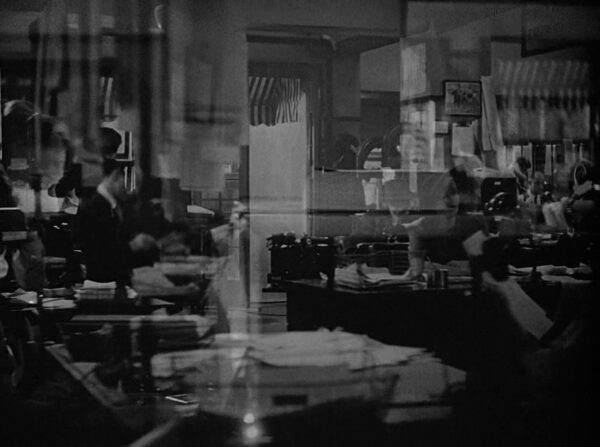
The cut from shot #2 to shot #3 (a mid-shot of Hildy walking away) is matched with Hildy’s movement thus hiding the cut by drawing attention to Hildy’s movement.
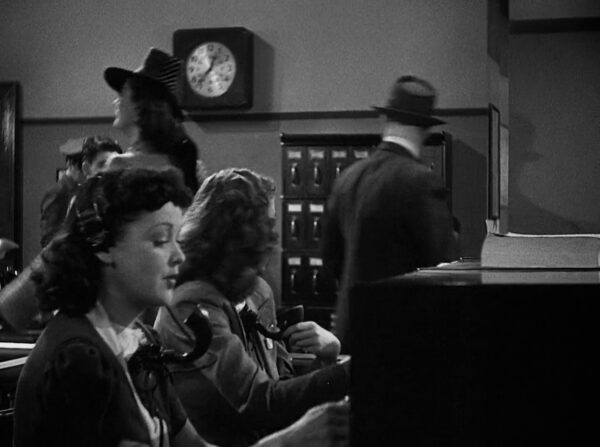
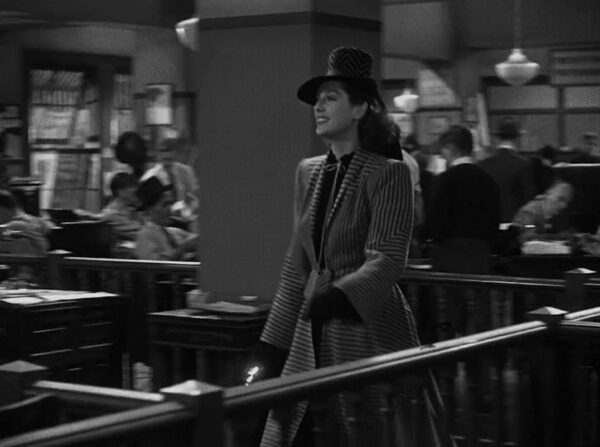
The other types of cuts – POV shots and cuts, shot-reverse shots, and cross cuts – which are part and parcel of this school of editing – are also used often in the film. By the time His Girl Friday was made and released, these shots and their corresponding cuts had become such an integral part of Hollywood films that the audiences too were completely accustomed to them and so did notice the cuts on screen.
There is however an interesting aspect to the opening credits of the film. It demonstrates a rare instance of self-reflexivity in a classical Hollywood film.
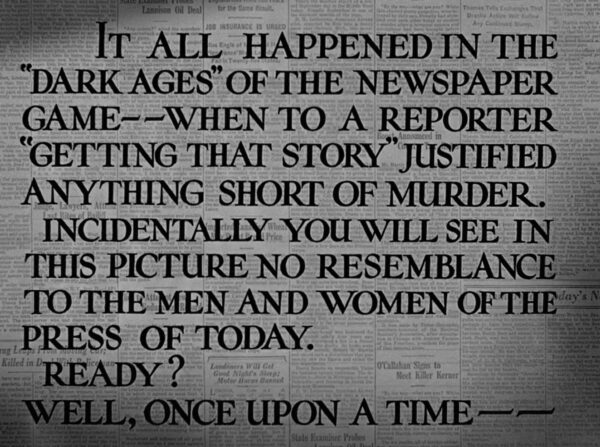
“Incidentally you will see in this picture no resemblance to the men and women of the press today. The keywords here are ‘you will see in this ‘picture’ – it is as if the omniscient narrator is drawing attention to the fact that what the audience will be watching is a ‘movie/film’ and that it has no connection with the real-life. This title card also acts as a defence for the studio and the producer lest the real press gets miffed at the portrayal of those involved with it. After all, Hollywood studios meant business and the producers would walk the extra mile to save their skins from any controversy or bad press publicity. But of course, as the film proper begins, it is business as usual – the viewers are immersed into the ‘real life’ as played out on the silver screen. There is another instance of self-reflexivity in the film in the form of a Hollywood in-joke. As the mayor who has caught Walter red-handed in his attempt to hide Earl Williams bellows, “You are through”, Walter counter-punches saying, “The last man who said to me was Archie Leach, just a week before he cut his throat.” Archie Leach was of course Cary Grant’s real name – Archibald Alexander Leach to be precise – before Paramount Studios changed it!
The production design of His Girl Friday, like the A-list movies of Hollywood in its classical age, is superb. The sets of The Morning Post office and newsroom, the courthouse newsroom and the jailhouse are as close to reality as possible. The cinematography scheme although not always conforming to the three-point lighting scheme – there are a few scenes which use chiaroscuro lighting to portray the dark mood of the scenes – is glossy and glamorous. Special mention must be made of the costume of Rosalind Russell – the striped suit and the cocked hat she wears brings out her character as a strong-willed woman of substance superbly.
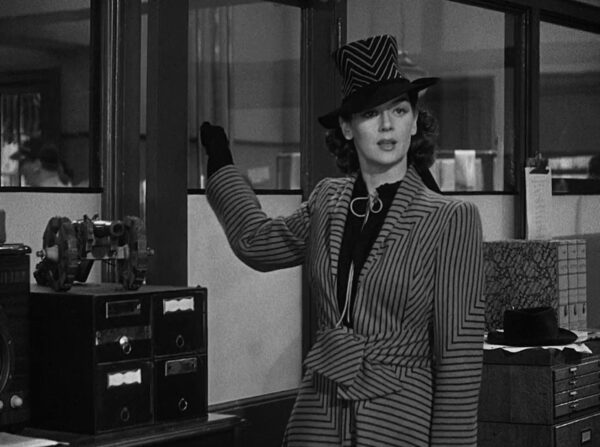
The ending of His Girl Friday is also in line with the conventions that are the hallmark of a classical Hollywood film. There is a definitive closure, all conflicts are resolved as per the personalities of the protagonists and the trials and tribulations they face in achieving their goals. Hildy discovers her true vocation and love – she remains a journalist and goes back to Walter. Walter is able to retain Hildy as his star reporter and of course, their remarriage is on course. Walter and Hildy are able to save Earl Williams from the gallows and defeat the sinister machinations of the Sheriff and the city politicians. All’s well that ends well – the world seems fair, predictable and logical – the audience goes back home with a pleasurable experience. That’s classic Hollywood!


